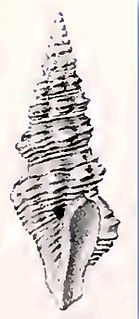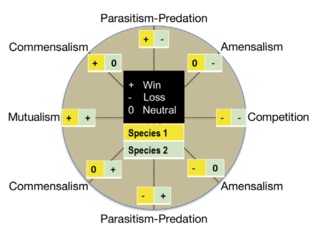 W
WBaseodiscus mexicanus is a species of proboscis worm in the family Valenciniidae.
 W
WCnidaria is a phylum under kingdom Animalia containing over 11,000 species of aquatic animals found both in freshwater and marine environments, predominantly the latter.
 W
WA corallivore is an animal that feeds on coral. Corallivores are an important group of reef organism because they can influence coral abundance, distribution, and community structure. Corallivores feed on coral using a variety of unique adaptations and strategies. Animals known to be corallivores include certain mollusks, annelids, fish, crustaceans, flatworms and echinoderms. The first recorded evidence of corallivory was presented by Charles Darwin in 1842 during his voyage on HMS Beagle in which he found coral in the stomach of two Scarus parrotfish.
 W
WDendrogramma enigmatica is a species of siphonophore, the only species of its genus. It has been first described in 2014 on the basis of its morphology from a collection of specimens gathered in 1986. As its taxonomic affinity among animals was unclear, it has been further identified in 2016 as a siphonophore by barcoding and phylogenomics from RNA material from new specimens. The specimens are presumed to represent parts (bracts) of the entire siphonophore, which has not been identified yet.
 W
WDrillia dejecta is a species of sea snail, a marine gastropod mollusc in the family Drilliidae.
 W
WDrillia euchroes is a species of sea snail, a marine gastropod mollusc in the family Drilliidae.
 W
WEchinoderm is the common name given to any member of the phylum Echinodermata of marine animals. The adults are recognizable by their radial symmetry, and include starfish, sea urchins, sand dollars, and sea cucumbers, as well as the sea lilies or "stone lilies". Echinoderms are found at every ocean depth, from the intertidal zone to the abyssal zone. The phylum contains about 7000 living species, making it the second-largest grouping of deuterostomes, after the chordates. Echinoderms are also the largest phylum that has no freshwater or terrestrial (land-based) representatives.
 W
WGelatinous zooplankton are fragile animals that live in the water column in the ocean. Their delicate bodies have no hard parts and are easily damaged or destroyed. Gelatinous zooplankton are often transparent. All jellyfish are gelatinous zooplankton, but not all gelatinous zooplankton are jellyfish. The most commonly encountered organisms include ctenophores, medusae, salps, and Chaetognatha in coastal waters. However, almost all marine phyla, including Annelida, Mollusca and Arthropoda, contain gelatinous species, but many of those odd species live in the open ocean and the deep sea and are less available to the casual ocean observer. Many gelatinous plankters utilize mucous structures in order to filter feed. Gelatinous zooplankton have also been called "Gelata".
 W
WGorgonorhynchus repens is a species of the proboscis worm in the subclass Heteronemertea and of the family Gorgonorhynchidae. It is to be found on the seabed in shallow water in the Pacific Ocean.
 W
WMarine invertebrates are the invertebrates that live in marine habitats. Invertebrate is a blanket term that includes all animals apart from the vertebrate members of the chordate phylum. Invertebrates lack a vertebral column, and some have evolved a shell or a hard exoskeleton. As on land and in the air, marine invertebrates have a large variety of body plans, and have been categorised into over 30 phyla. They make up most of the macroscopic life in the oceans.
 W
WThe Mesozoa are minuscule, worm-like parasites of marine invertebrates. Generally, these tiny, elusive creatures consist of a somatoderm of ciliated cells surrounding one or more reproductive cells. Decades ago, Mesozoa were classified as a phylum. Molecular phylogeny studies, however, have shown that the mysterious mesozoans are monophyletic, and emerged in the Lophotrochozoa as sister of the Rouphozoa.
 W
WMicrobial symbiosis in marine animals was not discovered until 1981. In the time following, symbiotic relationships between marine invertebrates and chemoautotrophic bacteria have been found in a variety of ecosystems, ranging from shallow coastal waters to deep-sea hydrothermal vents. Symbiosis is a way for marine organisms to find creative ways to survive in a very dynamic environment. They are different in relation to how dependent the organisms are on each other or how they are associated. It is also considered a selective force behind evolution in some scientific aspects. The symbiotic relationships of organisms has the ability to change behavior, morphology and metabolic pathways. With increased recognition and research, new terminology also arises, such as holobiont, which the relationship between a host and its symbionts as one grouping. Many scientists will look at the hologenome, which is the combined genetic information of the host and its symbionts. These terms are more commonly used to describe microbial symbionts.
 W
WParacatenula is a genus of millimeter sized free-living marine gutless catenulid flatworms.
 W
WParborlasia corrugatus is a proboscis worm in the family Cerebratulidae. This species of proboscis or ribbon worm can grow to 2 metres in length, and lives in marine environments down to 3,590 metres (11,780 ft). This scavenger and predator is widely distributed in cold southern oceans.
 W
WSponges, the members of the phylum Porifera, are a basal Metazoa (animal) clade as a sister of the Diploblasts. They are multicellular organisms that have bodies full of pores and channels allowing water to circulate through them, consisting of jelly-like mesohyl sandwiched between two thin layers of cells. The branch of zoology that studies sponges is known as spongiology.
 W
WThe World Day for the End of Fishing (WoDEF) is an international campaign launched by animal rights activists who demand the end of fishing practices. It takes place the on the last Saturday of March every year.
 W
WAny worm that lives in a marine environment is considered a marine worm. Marine worms are found in several different phyla, including the Platyhelminthes, Nematoda, Annelida, Chaetognatha, Hemichordata, and Phoronida. For a list of marine animals that have been called "sea worms", see sea worm.
 W
WMarine biology is the scientific study of marine life, organisms in the sea. Given that in biology many phyla, families and genera have some species that live in the sea and others that live on land, marine biology classifies species based on the environment rather than on taxonomy.
 W
WMarine biology is the scientific study of marine life, organisms in the sea. Given that in biology many phyla, families and genera have some species that live in the sea and others that live on land, marine biology classifies species based on the environment rather than on taxonomy.
 W
W